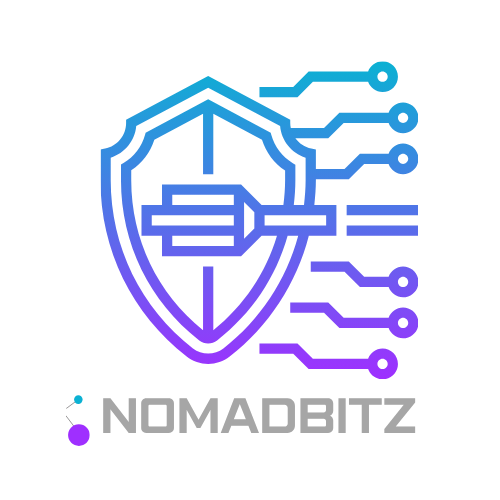Anúncios
Creating memorable tech experiences is a crucial aspect for businesses aiming to engage customers in the United States. Understanding how to effectively integrate technology can transform user satisfaction and brand loyalty.
In an era where technology evolves daily, businesses must stay ahead of trends that revolutionize customer experiences. This article outlines strategic approaches to designing and implementing tech experiences that resonate with users.
From enhancing interfaces to leveraging innovative tools, the following guidelines will help you craft impactful tech experiences. Let’s explore these strategies in detail, ensuring you can create an environment that captivates and engages.
Understanding Your Audience
To create effective tech experiences, start by thoroughly understanding your target audience. Research their preferences, behaviors, and pain points to tailor your approach accordingly.
This understanding ensures the tech solutions you implement align with user expectations, increasing satisfaction and usability. Employ surveys and feedback mechanisms to gather real insights directly from users.
Anúncios
Segmentation can also be beneficial. By categorizing your audience based on demographics and interests, you can create more personalized experiences that resonate on a deeper level.
Additionally, keeping an eye on user analytics enables businesses to adapt their offerings quickly. This adaptability is key in maintaining relevance in a dynamic market.
Ultimately, a well-informed understanding of users is the foundation for creating tech experiences that truly captivate your audience.
Anúncios
Designing Intuitive Interfaces
The design of your digital interface significantly impacts user experience. Ensuring a clean, intuitive design allows users to navigate effortlessly through your platform.
Focus on usability by following design best practices such as consistency in visual language, easy navigation, and accessible content. These facilitators increase user retention and satisfaction.
Incorporate feedback loops within your interfaces. Allow users to voice concerns or suggest improvements directly on the platform, indicating that their opinion is valued.
Utilize A/B testing as a tool for optimizing layouts and features. Testing variations can reveal user preferences, guiding you toward the most effective design choices.
Including responsive design principles guarantees accessibility across devices. An interface that adapts seamlessly across desktop and mobile attracts a broader audience and enhances overall usability.
Leveraging Emerging Technologies
Emerging technologies can elevate user experiences to new heights. Incorporating AI, VR, or AR can create engaging interactions that captivate users beyond standard experiences.
AI, for example, enhances personalization, making recommendations based on user behavior. This tailoring increases engagement and creates pathways for deeper brand relationships.
Virtual Reality (VR) can immerse users in a completely different environment, offering interactive experiences such as virtual tours or simulations that engage the audience uniquely.
Augmented Reality (AR) integrates digital information with the real world, enabling users to experience products or services in their environment. This hands-on approach can significantly influence their decision-making processes.
Embracing these technologies doesn’t mean abandoning tried-and-true methods but rather enhancing them with cutting-edge innovations for a richer tech experience.
Creating Seamless Integrations
Seamless integration of various technologies is essential for smooth user experiences. Ensuring that different systems work well together enhances overall functionality and reduces user frustration.
Utilize APIs effectively. They enable various software solutions to communicate, allowing users to connect effortlessly across platforms without redundant steps.
Regularly updating and optimizing integrations ensures they remain consistent and reliable. This ongoing maintenance is crucial for sustaining positive user interactions over time.
Training your team on how these integrations work is also beneficial. A informed staff can assist users quickly and efficiently, leading to increased satisfaction.
Ultimately, seamless integration creates a cohesive experience that encourages user engagement and promotes a more organized platform structure.
Focusing on Customer Support
Customer support plays a pivotal role in shaping tech experiences. Providing timely assistance can reassure users and enhance their overall satisfaction with your service or product.
Implementing chatbots is one way to provide round-the-clock support. They offer immediate answers to common queries, helping users find the information they need without delays.
Consider establishing a rewards program for providing feedback or resolving issues. This not only encourages user engagement but can foster loyalty and strengthen relationships.
Additionally, creating a comprehensive resource center with FAQs, tutorials, and guides aids users in navigating challenges without needing direct support.
By prioritizing responsive and helpful customer service, businesses can significantly enhance user experiences and foster lasting relationships.
Gathering Feedback and Iterating
Continuous improvement is vital in tech experiences. Actively seeking user feedback allows you to identify areas of success and opportunities for enhancement.
Engage users through surveys, interviews, and feedback forms after their experiences. This data collection will reveal patterns and specific areas needing attention.
Regularly assess user analytics to understand behaviors and preferences. Using this information to iterate and improve features will keep your platform relevant and engaging.
Creating a feedback loop encourages users to feel involved in the development process, leading to a more invested community around your product.
Ultimately, an iterative approach fueled by user feedback establishes a culture of continuous improvement that can lead you to deliver top-tier tech experiences.
Measuring Success and Analytics
Defining success metrics is essential for assessing the effectiveness of your tech experiences. Utilize analytics tools to monitor user interactions and engagement levels.
Establish key performance indicators (KPIs) such as user retention, satisfaction rates, and engagement metrics. This quantifiable data provides insight into areas that may need improvement.
Adapting strategies based on data trends allows you to pivot quickly and address emerging user needs. Analytics serve as a guiding light, steering your efforts in the right direction.
Utilizing heat maps can provide a visual representation of user interactions, identifying popular features and sticking points within your interface.
Consistently measuring success ensures your tech experiences remain dynamic, adaptable, and uniquely user-focused.
Conclusion
Creating memorable tech experiences in the United States involves a multi-faceted approach that combines understanding your audience, intuitive design, and leveraging technology effectively.
By focusing on seamless integrations, excellent customer support, and continuous feedback, your business can thrive in engaging users deeply and meaningfully.
Always remember to measure your success through analytics. Regularly adapting your strategies based on this data will keep your tech experiences relevant and compelling.
Investing effort into enhancing tech experiences is not merely beneficial; it’s essential. Elevate your business by prioritizing the user experience today!



